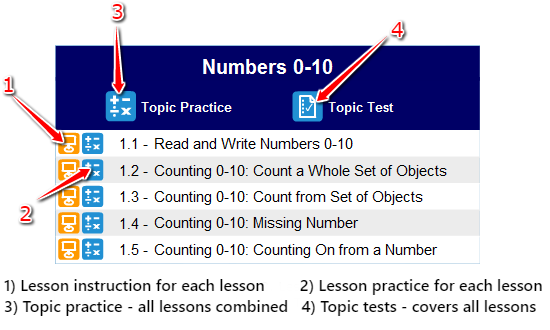Math We Teach

As long as we’ve been teaching math in this country, there have been debates about whether we should emphasize “conceptual understanding” or “procedures.”
We all remember the Math Wars, after all.
Fortunately, for you and for me, that’s not I’m writing about.
However, I should start by saying that I think both conceptual understanding and procedural fluency are equally important. And I think most people would agree. I can’t imagine trying to learn math that leaves out eitherfocus.
But there is still something curious about the continuing dialogue about teaching math.
In spite of the importance of conceptual understanding, what I hear very little about is the actual concepts themselves.
In other words, what are the actual concepts of math that students need to come to understand. What do they really “mean?”
It’s easy to assume that this is a trivial question with an easy answer, but I don’t think that’s the case.
I’ve spent over 25 years researching how various topics in math are taught in this country. One of the most surprising…even shocking… things I discovered was that there is so little agreement among mathematicians and math educators, about what some of the most fundamental concepts in math actually mean.
It starts with some very basic concepts, like what a number is and how the properties of numbers we work with change as we move through elementary and middle school in preparation for algebra. (As a side note, this debate has been underway since the era of Greek philosophers, thousands of years ago.)
More fundamentally, what does addition mean…or subtraction? Sounds simple, but it’s not.
Another example that really astounded me was the debate created by blog posts by a very well-known professional mathematician, Keith Devlin a few years ago. The posts were about the “simple” notion of what multiplication means.
Not only are there very different views on this subject, but strong emotion attached, as evidenced by the fact that Devlin terminated the online debate about the issue when it got too overheated.
Other topics have also resulted in similar disagreements among the most highly regarded college math professors, who are also math professionals. One such topic is what a fraction is. This is also a topic that the National Math Advisory Panel identified as one of the most problematic in the U.S. math curriculum.
Something else I learned was that the simple concepts of math we assume are universal in this country are not universal at all. For example, the basis for teaching fractions in Japan is very different from the basis for teaching fractions in this country. In other words, they teach a concept of fractions that is different from the one we teach.
I’ve decided after spending so much time trying to resolve these differences in how people define math concepts that I should share some thoughts based on that research.
This is not a small topic, so I can really only introduce it in this post.
I’ll throw out a teaser. Did you know that negative numbers were nottruly accepted by all mathematicians until the mid-1800s? That’s only about 150 years ago. In the long history of math going back thousands of years, this is almost like yesterday. (By the way, the mid-1800s is about the same time calculus was invented.) At first glance you wouldn’t think a topic like negative numbers would be as hard to understand and accept, as calculus.
But it turns out, those are the facts. The late development and acceptance of negative numbers is well chronicled by many mathematicians and math historians.
The really intriguing part of the story, however, is why this math concept took so long to become part of commonly accepted math.
One way to describe the situation was that it was the result of a conspiracy…but not the normal kind. It was a conspiracy between zero and subtraction.
And unfortunately, we haven’t yet overcome the fallout from this conspiracy.
Stay tuned as I attempt to unravel this mystery.


